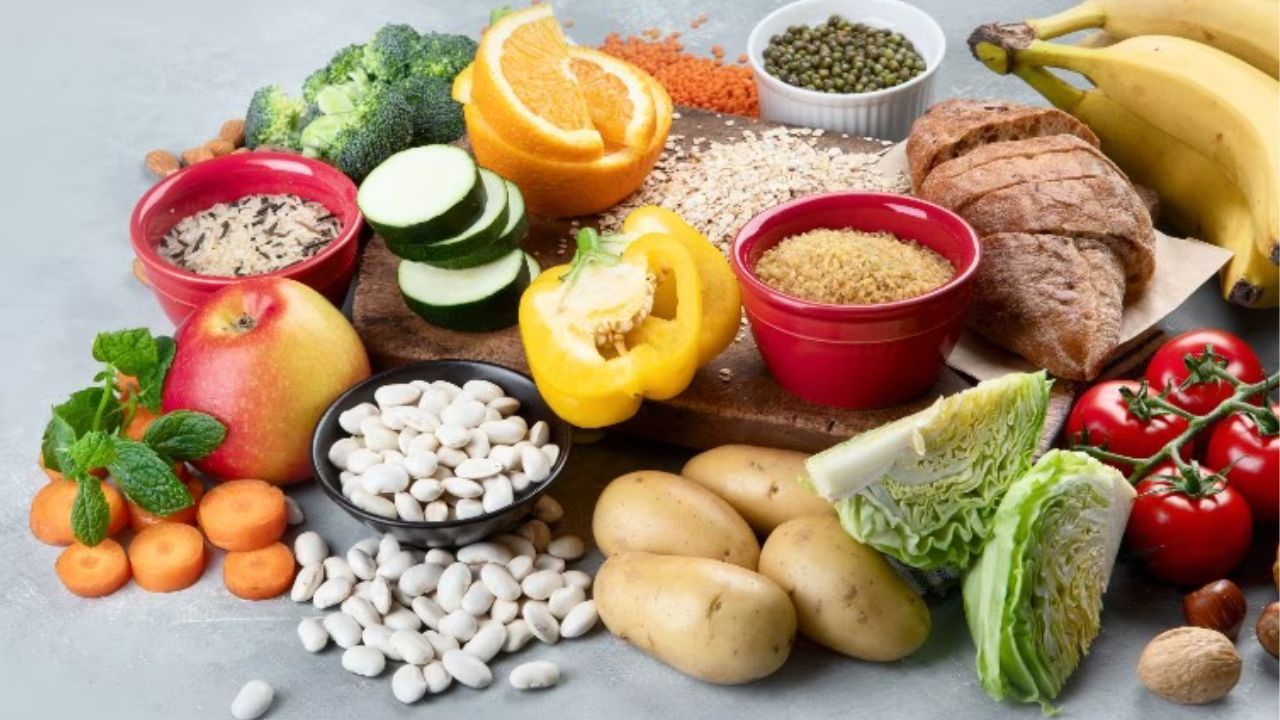Breathing: it’s as natural as, well, breathing. But have you ever paused to consider the vital role certain foods play in fuelling our most basic life function? In today’s busy world, ensuring we’re eating foods that promote healthy oxygen levels is more crucial than ever.
While eating oxygen-rich foods won’t fill your lungs directly with the vital gas, it does play a pivotal role in fostering an environment that boosts oxygen levels in your bloodstream. With the lurking concerns of health issues like asthma, complications from COVID-19, heart diseases, and more, keeping an optimal oxygen saturation between 94-98% in our blood is essential to ward off hypoxia and potential tissue damage. A smart, regular check-in with a pulse oximeter, and of course, the right dietary choices can set you on the right track.
So, before you plunge into the ’30 must-eat foods’, let’s shed some light on the “how” and “why” of it all.
Why Certain Foods Become Your Lungs’ Best Mates
Although it might sound intriguing, these foods aren’t bubbling with pure oxygen. What they do have, however, are vitamins, minerals, and molecules, coupled with an alkaline pH, that harmonise and ensure our blood flows efficiently, leading to better oxygen levels in our bodies.
So, when you’re drafting your shopping list, what should you be eyeing? Foods bursting with vitamins A, B2, B3, B5, B9, and B12, as well as minerals like iron and copper. Don’t forget to keep an eye out for the molecule nitric oxide. This ensemble not only boosts oxygen levels but also works wonders in reducing the risk of issues like strokes, ensuring the heart pumps effectively, and even activating that much-needed vitamin D.
Now that you’re in the know, let’s dive right into the list. Keep scrolling, and you’ll be on your way to an oxygen-optimised diet in no time!
30 Foods To Elevate Your Oxygen Game
Top 10 Fruits for an Oxygenated Boost
- Avocados: The Green Wonder
With a treasure trove of vitamins such as A, B3, B6, B12, alongside essentials like polyunsaturated fatty acids (PUFAs) and dietary fibre, avocados are your ticket to enhanced oxygen levels. But that’s not all – they’re also champions in promoting heart health, blood sugar stability, lipid profile improvement, and even weight management.
Top Tip: Throw half an avocado into your daily meals, be it in smoothies, salads, or a delightful guacamole for tacos. Your body will thank you for it.
- Pomegranate: The Ruby Red Gem
Packing a punch with iron, copper, and a range of vitamins, pomegranates offer a masterclass in boosting blood flow and, consequently, oxygen levels. Their magic lies in enhancing nitric oxide availability, ensuring your tissues always get the oxygen they crave.
Top Tip: Delight in a cup of its juicy kernels, enjoy a daily dose of 375 ml of its freshly-squeezed juice, or sprinkle some over your salad. You’re not just consuming a fruit; you’re consuming vitality.
- Kiwi: A Tangy Tropical Treasure
This vibrant green fruit isn’t just a treat for the taste buds. Loaded with vitamins, copper, iron, and dietary fibre, kiwis play a significant role in safeguarding DNA, reinforcing immunity, and curbing inflammation.
Top Tip: Treat yourself to a large kiwi daily. Whether blitzed into a smoothie or combined in a refreshing fruit salad, let this tangy fruit work its oxygen-boosting magic.
- Cantaloupe: The Subtle Powerhouse
Though gentle on the palate, cantaloupes are formidable when it comes to their vitamin and antioxidant content. A boon for those monitoring their sugar levels, they are warriors in the fight against inflammation and are great for immune support.
Top Tip: Relish a cup of this juicy melon daily. From refreshing coolers to delightful fruit bowls, there are endless ways to enjoy its oxygen-enhancing benefits.
- Mango: The King of Fruits
Mangoes, renowned for their succulent sweetness, are brimming with vitamins A, B, and C, and crucial minerals. Their inherent antioxidants boost overall health, with added benefits of being anti-inflammatory and liver-protective.
Top Tip: Dive into half a cup of this tropical delight, integrate it into your breakfasts or whip up a lush smoothie. If you’re watching your sugar intake, ensure you check with your health advisor about consumption levels.
- Peaches: Summer’s Juicy Secret
Packed with vitamins and minerals, peaches are not only a treat to your taste buds but also a powerhouse of health benefits. They stand out as functional foods, ensuring that every bite you take does more than just satisfy your cravings; it nourishes your body.
Top Tip: Fancy a peachy day? Have a large one daily or toss it into your favourite juices, dreamy smoothies, or fresh summer salads.
- Pineapple: The Tropical Health Star
With an ensemble of vitamins, minerals, and the magic component – bromelain, pineapples are key players in enhancing blood vessel oxygen permeability. Bonus: they stand guard against inflammation and keep blood clots at bay.
Top Tip: Dive into a cup of fresh pineapple chunks, blend it into a tropical smoothie, or simply jazz up your salads with its juicy slices.
- Berries: The Tiny Titans
Don’t let their size deceive you. Berries like blueberries, strawberries, and raspberries come loaded with essential vitamins, minerals, and antioxidants. Their superpowers? They combat inflammation, regulate cholesterol, and even tune insulin sensitivity.
Top Tip: A cup of mixed berries a day keeps the doctor away! Introduce them into your morning routines, be it in fruit bowls, refreshing smoothies, or simply as juice.
- Figs & Dates: Nature’s Sweet Healers
These natural sweeteners, apart from tantalizing your taste buds, bring in a host of benefits. Loaded with vitamins and minerals, they excel in boosting your immunity, cognitive health, and packing antioxidant punches.
Top Tip: Incorporate 1-2 medjool dates and a handful of dried figs into your daily diet. Blend them in smoothies or enjoy them as they are, but remember, if you’re watching your sugar, it’s best to consult with your healthcare professional.
- Citrus Fruits: The Vitamin C Champions
More than just a tangy treat, citrus fruits are vitamin C goldmines that aid in the development of oxygen carriers. These zesty delights are also packed with beneficial compounds that promise a plethora of health benefits, from maintaining cardiovascular health to ensuring improved blood flow.
Top Tip: Embrace the zest of limes, lemons, tangerines, oranges, and grapefruits. Juice them up for a refreshing drink, or add a citrusy twist to your salads.
8 Marvellous Veggies to Elevate Oxygen Levels
- Beetroot: The Ruby-red Lifeline
Sworn by fitness aficionados everywhere, the beetroot has an ace up its sleeve: nitric oxide. This natural component widens our blood vessels, ensuring that every corner of our body gets its dose of oxygen-rich blood. And the science backs it up too – beetroot juice is a known hypoxia-buster.
Top Tip: Enjoy half a beet daily. Whether you fancy it raw, boiled, stirred into a soup, gracing your salad, or blitzed into a refreshing smoothie, this vegetable is your heart’s best friend.
- Carrot: Nature’s Orange Wand
These vibrant wonders are more than just a treat for your eyes. Packed with vitamins, minerals, and beneficial phytochemicals, carrots play a pivotal role in detoxifying our bodies and ensuring our tissues are well oxygenated.
Top Tip: Snack on some crunchy baby carrots or jazz up your salads with a handful. For a sweet twist, how about a homemade carrot cake? Or, pour yourself a glass of freshly-blended carrot juice to kickstart your day.
- Spinach: Green and Supreme
Bow down to the royalty of leafy greens – spinach. Beyond its rich iron content, this verdant vegetable brings a suite of vitamins and antioxidants to the table. It’s like a full-service spa for your cells, quenching oxidative stress, soothing inflammation, and balancing blood sugar and lipid levels.
Top Tip: Introduce a handful of fresh baby spinach to your daily salads. And if you’re game for a real treat, blend it into a scrumptious smoothie. Spoiler: We’ve got an irresistibly refreshing spinach-kiwi smoothie recipe coming up in our “drinks to elevate oxygen levels” section. Stay tuned!
- Garlic
Garlic is known to promote heart health. It has lipid-lowering, antimicrobial, and antiplatelet properties. A study found that garlic consumption could improve baseline arterial oxygen levels and reduce hypoxemia in people with hepatopulmonary syndrome (HPS), a condition affecting the lungs of patients with liver disease.
Consume at least one clove of garlic every day with food. You can add it to marinades or curries or even chew it raw.
Note: Avoid consuming garlic if you are on anticoagulants.
- Sweet Potato
Sweet potatoes with orange or purple flesh contain vitamins A, B3, B5, and B6, iron, copper, anthocyanin, and beta carotene. Consuming sweet potatoes help reduce arterial oxidative stress (a disorder caused by oxidative damage of proteins, lipids, and DNA) and arterial stiffness (stiffening of large arteries that increases the risk of cardiovascular diseases).
Consume mashed, baked, or air-fried sweet potatoes as a snack, in salads, or side dishes.
- Beans
Beans are legumes that contain a high amount of iron, which is crucial for oxygen transport, DNA synthesis, and other metabolic processes. They are loaded with potassium, calcium, and dietary fibre.
Consume blanched or boiled green, black, and dried beans in salads and curries to enrich your meal with iron and other important nutrients to increase oxygen levels in your body.
- Broccoli
Broccoli is loaded with antioxidants and has phytochemicals that help inhibit inflammation. An experiment confirmed a proof-of-concept that broccoli helps prevent severe COVID-19. However, further studies are required to solidify this proof-of-concept.
Consume half a cup of blanched broccoli florets everyday or every other day in salads to reduce oxidative stress and inflammation in the body.
- Lettuce
Lettuce is a great source of vitamins A, B3, B5, B6, and C, folate, iron, potassium, and zinc. It is rich in antioxidants, such as carotenoids and vitamins E and C. An animal study has shown that lettuce consumption prevents tissue damage caused by oxidative stress(tissue oxidation), improves synthesis of lipids (lipid metabolism) and reduces the risk of cardiovascular diseases.
Consume fresh romaine or iceberg lettuce with salads to add crunch to your food and protect your health.
7 Protein-Rich Foods To Boost Oxygen Levels
- Eggs
Eggs, especially when hard-boiled, are veritable treasure troves of nutrients. From iron and potassium to a slew of vitamins including A, D, E, and the various Bs, eggs are a nutritional powerhouse. Sure, we’ve heard the tales of the dreaded cholesterol in egg yolks. However, recent studies suggest they might have a silver lining – they’re found to have anti-inflammatory and pain-relieving properties. A toast to health! Fancy an egg or two? Go ahead and indulge in 3-5 whole eggs per week. Though, a word of caution for those monitoring their cholesterol: maybe give the yolk a miss.
- Legumes
Ever wondered about a food group that’s both hearty and healthy? Enter legumes. Be it lentils, chickpeas, kidney beans, or even fava beans, they’re brimming with goodness like iron, potassium, and the essential B vitamins. Not only are they a fantastic source of plant-based protein, but they also come with the bonus of being completely fat-free. Consuming these little wonders has been linked to an array of health benefits, from keeping hypertension in check to aiding in weight management. So, how about adding a daily dose of half a cup of your favourite legume? It’s a delicious way to ensure optimal blood flow throughout your body.
- Mushrooms
Mushrooms, often termed the meat for vegetarians, are more than just a tasty treat. They’re rich in dietary protein and are packed with a variety of essential minerals and vitamins. What’s more, they house beta-glucans, known for their antioxidant and cholesterol-lowering properties. But that’s not all – these fungi marvels are adept at ensuring our blood vessels remain wide and unblocked, keeping away nasty clots and fatty build-ups. Plus, their anti-inflammatory nature is a boon. Thinking of making them a regular on your plate? Aim for half a cup, sautéed to perfection, 2-3 times a week. However, if arthritis is a concern, it might be worth having a chat with your GP before diving into that mushroom feast.
- Meat & Fish: The Powerhouses of Protein
Both meat and fish are indispensable sources of essential nutrients such as vitamins B12 and B3, iron, zinc, selenium, and calcium. Not to mention, the all-important omega-3 fatty acids found in fatty fish. Opt for lean meats, like the humble chicken breast, and favour the unsung heroes of the fish world: salmon, tuna, and mackerel, among others. By incorporating these into your diet, you’re not just boosting oxygen transport but also endorsing a heart-healthy, bone-strengthening regimen.
Top Tip: Savour a serving of grilled or baked skinless chicken, or a flavourful fish dish paired with verdant greens. But remember, while processed meats like salami might tempt you, they’re best enjoyed in moderation.
- Organ Meat: The Nutrient-dense Delight
The organ meats, often overlooked, are nutrient gold mines. Whether it’s liver, heart, tongue, or brain, these offer a blend of vitamins, minerals, and essential fatty acids that few other foods can match.
Top Tip: Consider adding organ meats to your menu, but perhaps once a week or fortnight. Those monitoring cholesterol or managing arthritis might wish to consult with their healthcare provider before indulging.
- Dairy: Nature’s Creamy Elixir
The dairy aisle is more than just a source of calcium. Think zinc, B vitamins, vitamin D, probiotics, and a suite of proteins and fats. These staples not only improve oxygen levels but also ward off potential cardiovascular and diabetes risks.
Top Tip: A daily dose of dairy, be it a glass of milk, a dollop of yoghourt, or a hint of ghee, can go a long way in ensuring your body’s oxygenated well-being.
- Nuts & Sunflower Seeds: Crunchy O2 Boosters
Nuts and seeds aren’t just delicious; they’re nutritional dynamos. Packed with a slew of vitamins, minerals, fibres, and essential fatty acids, they champion the cause of oxygen transport, ensuring your heart pumps oxygen-rich blood efficiently throughout your body.
Top Tip: Start your day with soaked almonds, a couple of walnuts, a smattering of pecans, and a sprinkle of sunflower seeds. Be it on your breakfast bowl or as an afternoon snack, they’re a crunch you’ll cherish. A word of caution for those watching their cholesterol: go easy on the cashews.
Embrace these power-packed foods and let every breath you take be a testament to a healthier you!
5 Drinks To Boost Oxygen Levels
When it comes to enhancing oxygen levels in the body, staying hydrated and ensuring nutrient-rich intake through drinks is essential. These five beverages are not just delicious, but they’re packed with vital components that can help enhance oxygen flow.
- Beetroot And Lime Juice
This drink capitalises on the blood-vessel dilating properties of beetroot and the vitamin C boost from lime.
How To Prepare:
- Blitz half a peeled beetroot in a blender and strain the juice.
- Add the juice of half a lime and a pinch of black salt.
- Stir and enjoy! Drink this in the morning for the best effects.
Note: This juice might be a bit strong, especially if consumed at night, as it may cause throat discomfort.
- Pomegranate And Peach Smoothie
A deliciously sweet combination of pomegranate and peach, this smoothie is packed with antioxidants.
How To Prepare:
- Blend a cup of pomegranate kernels and strain the juice.
- Puree half a cup of roughly chopped peaches and combine with the pomegranate juice.
- Add a pinch each of black pepper and Himalayan pink salt.
- Mix and indulge in this fruity delight.
- Pineapple, Dates, And Seeds Smoothie
This tropical concoction provides a balance of sweetness from the pineapple and dates and a nutty undertone from sunflower seeds.
How To Prepare:
- Combine a cup of pineapple cubes, one date, and a tablespoon of sunflower seed powder in a blender.
- Once smoothly blended, pour and savour every sip.
- Carrot And Orange Smoothie
The richness of vitamin A from carrots combined with the vitamin C from oranges makes this smoothie a nutrient-packed choice.
How To Prepare:
- Blend one large peeled and chopped carrot with one peeled orange until smooth.
- Pour into a glass and enhance with a hint of lemon juice and a pinch of black salt.
- Stir and relish.
- Spinach And Kiwi Smoothie
A refreshing blend of the nutrient-packed spinach and the tangy-sweet kiwi.
How To Prepare:
- In a blender, combine a cup of washed baby spinach with two roughly chopped kiwis (peel optional).
- Once blended, pour into a glass and elevate the taste with the juice of half a lime and a pinch of black salt.
- Mix and dive into this green goodness.
- These drinks are not only delicious but also filled with ingredients that can significantly improve the oxygen levels in your body. It’s a flavorful way to breathe better and feel better!
The Oxygen-Rich Food Myth and More
There’s a common misconception about ‘oxygen-rich foods’. In reality, no foods directly deliver oxygen to our bodies. However, there are foods that can promote optimal blood flow, ensuring oxygen carried by our blood is efficiently delivered to every cell. Foods like avocado, pomegranate, beetroot, spinach, and the aforementioned eggs, legumes, and mushrooms are just a few in this category. Ensuring a diet rich in such foods can aid in maintaining your body’s oxygen saturation levels. That said, if you ever suspect your blood oxygen levels are dipping below the norm, always consult with a medical professional. It’s vital to nip potential issues, like asthma or heart diseases, in the bud.
Frequently Asked Questions
- Does a low-salt diet boost oxygen levels?
Master Nutritionist Amy Fox explains, “An excessively salty diet may lead to water retention in tissues, potentially reducing the body’s oxygen content. So, a low-sodium diet not only benefits the heart and blood pressure but may also aid in better oxygenation of the body. More oxygen generally equates to better detoxification.”
- Can oxygen enhance nutrient absorption?
“In an oxygen-rich environment, the blood’s nutrient and vitamin carriage and absorption efficiency spike,” says Amy. “Oxygen levels also play a pivotal role in boosting immunity and several other bodily functions.”
- Will breathing exercises improve my oxygen levels?
Amy suggests, “Breathing exercises are indeed effective in increasing the intake of oxygen, thereby boosting the overall blood oxygen content. Couple these exercises with healthful habits like abstaining from smoking and maintaining a fruit and vegetable-rich diet.”
- Does turmeric boost oxygen levels?
Absolutely! Turmeric aids in blood circulation. The more efficient the blood circulation, the better the haemoglobin in red blood cells can transport oxygen from our lungs to every nook and cranny of our body.
- Are there herbs that enhance oxygen?
Yes, indeed. Herbs such as ginkgo biloba, motherwort, and ginger have been celebrated for their capacity to invigorate blood circulation, which in turn can amplify blood-oxygen levels.
- How does water affect oxygen levels?
Staying hydrated is crucial. Consuming adequate water ensures our lungs remain moistened, enabling them to efficiently oxygenate blood and expel carbon dioxide.
- Is an oxygen level of 92% good?
While 92% isn’t ideal, it’s deemed safe. Typically, oxygen saturation levels should oscillate between 95-100%. If levels fall to 92-94%, it’s a cautionary period, suggesting you seek medical attention. Anything below 90% warrants immediate medical intervention.






